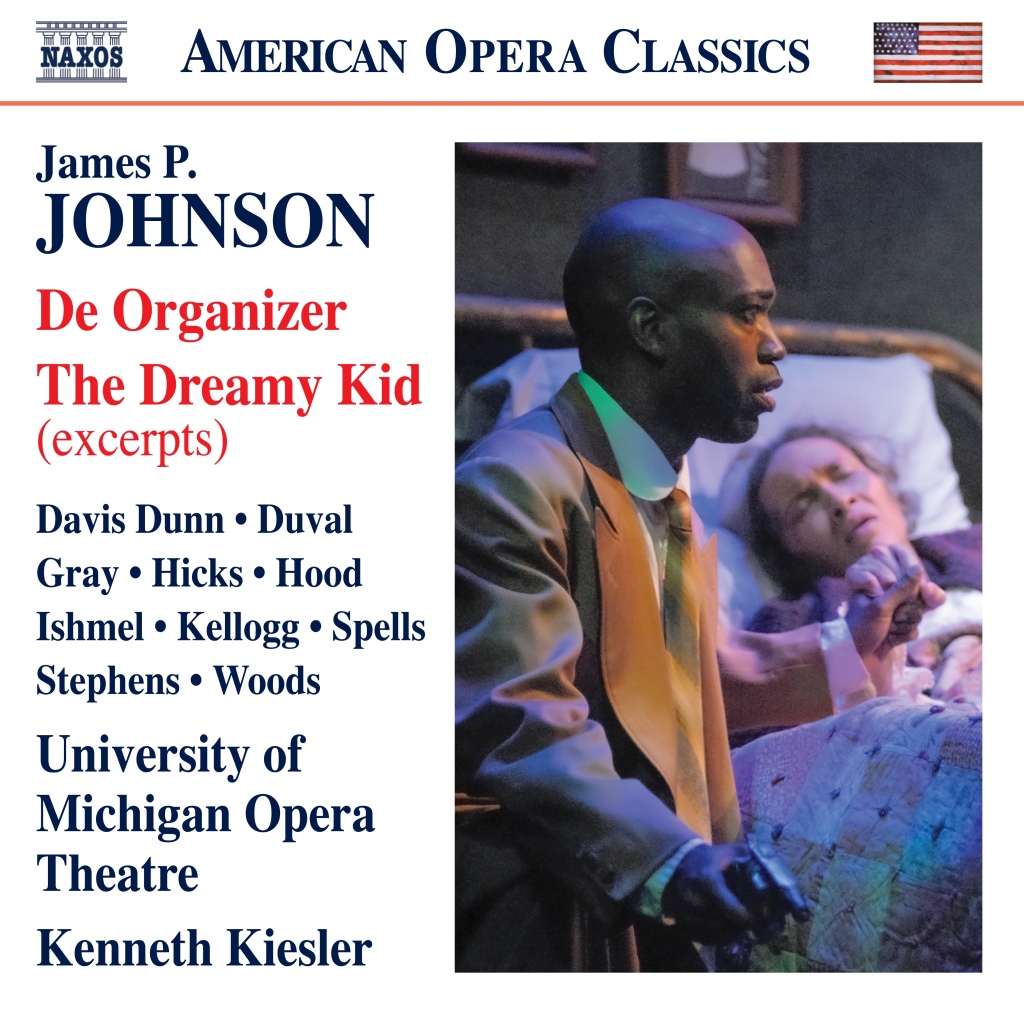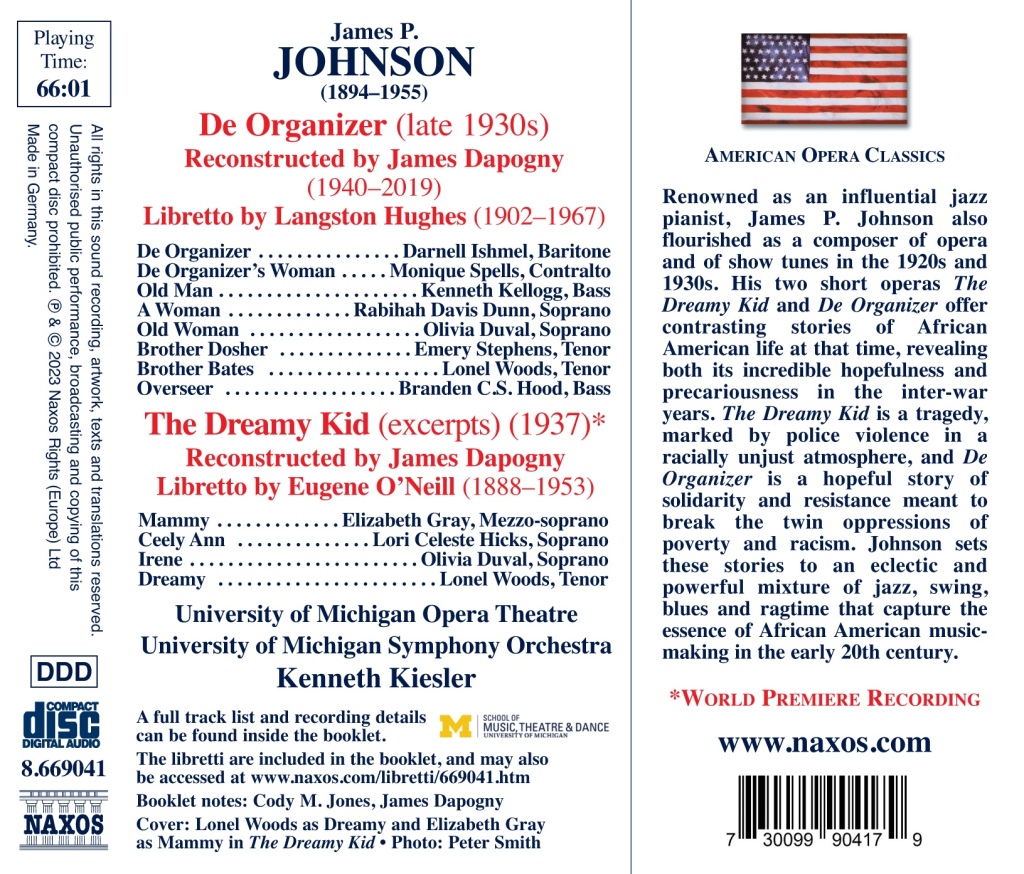
Sono Luminus DSL-92207
The lovely cover photo for this album by San Francisco born pianist Lara Downes is reminiscent of any number of socially conscious folk/rock stars of the 60s and 70s. It would seem that this is no accident. This delightful album of short pieces by a wide variety of American composers takes its title from the Langston Hughes (1902-1967) poem, Let America Be America Again (1935). By so doing the pianist places this interesting selection of short piano pieces firmly in the context of black racial politics and the artistic expression of black America as well as those influenced by this vital vein of American culture (both musical and literary). It is a graceful and deeply felt effort and I hope that the metaphor of the title of my review is not too tortured a one to reflect that.
This is also a very personal album. Downes seems to share some deeply felt connections with her materials. This artist, born to a white mother and a black father, invokes a careful selection of short piano pieces steeped sometimes in jazz and blues but also the political directness (and optimism) which was characteristic of the inter-war years that brought forth the Hughes poem. There is both sadness and celebration in these virtuosic and technically demanding little gems (most apparently recorded for the first time or at least the first time in a while). The pianist’s comments on each individual piece are also critical to the understanding of this disc as she shares the impact and meaning that the music has had for her.
There are 21 tracks by 19 composers in all and the selections themselves are quite a feat. They range from the 19th to the 21st centuries and are composed by both men and women of a variety of racial and ethnic backgrounds. All seem to share the sort of populist charm befitting the idealized America yearned for in the poem which is to say that they represent a kind of idealized or hopeful nationalism. Downes is well acquainted with a large variety of American music and recognizes no distinction between classical and so-called “vernacular” traditions.
In fact none of these things are atypical for this artist. Her previous albums Exiles Cafe (2013) featured music by composers exiled from their homelands, A Billie Holiday Songbook (2015) celebrated the life of this iconic black artist and her American Ballads (2001) demonstrated her deep mastery and affection for populist (but not jingoistic) nationalism. Her tastefully issue oriented albums define a very individual path and the present album appears to be a very logical and well executed next entry into her discography.
This disc shares a similar heritage to that of Alan Feinberg’s four discs on Argo/Decca entitled, The American Innovator, The American Virtuoso, The American Romantic and Fascinating Rhythm: American Syncopation. Another notable antecedent is Natalie Hinderas’ groundbreaking two disc set of music by African-American composers.
And now on to the music:
Morton Gould (1913-1996) was a Pulitzer Prize winning composer and conductor with a style informed by his study of jazz and blues in a vein similar to that of Bernstein and Copland. He is represented here by American Caprice (1940).
Lou Harrison (1917-2003) was a composer, conductor and teacher. He was a modernist and an innovator in the promotion of non-western musical cultures. His New York Waltzes (1944-1994) are three brief essays in that dance form.
The traditional folk song Shenandoah (apparently in the pianist’s transcription) is next. This tune will be familiar to most listeners as a popular selection by choral groups and the melody is a common metaphor for things American.
Amy Marcy Cheney Beach (1867-1944) was one of the first successful female American composers. Her “From Blackbird Hills” Op. 83 (1922) is representative of her late romantic style and her incorporation of Native American (Omaha) elements in her music.
Samuel Coleridge-Taylor (1875-1912) is a English composer with Creole roots, a black composer, known as the “African Mahler” in his day. Deep River (1905) is his setting of this spiritual which also was one of Marian Anderson’s signature pieces.
Dan Visconti (1982- ) was commissioned by the International Beethoven Festival to write his Lonesome Roads Nocturne (2013) for Lara Downes. It receives its world premiere recording in this collection.
Swiss-American composer and teacher Ernest Bloch (1880-1959) is certainly deserving of more attention. His At Sea (1922) is used here to represent the sea voyages of the many immigrants (willing and unwilling) whose journey defined in part who they were.
George Gershwin (1898-1937) mastered both the vernacular tradition (as one of the finest song writers of the 20th Century) and the classical tradition in his too few compositions written in his sadly abbreviated life. His opera Porgy and Bess (1935) is contemporary with the Langston Hughes poem mentioned earlier. Downes most arrestingly chooses the arrangement of “I loves you, Porgy” by the classically trained iconic singer, musician and civil rights activist Nina Simone (1933-2003). Quoting from Downes’ notes (Nina Simone expresses what she knew) “…about being a woman, being black and about being strong and powerless all at the same time.” Indeed one of the most potent lines of the Hughes poem reads, “America was never America to me.”
Angelica Negrón (1981- ) was born in Puerto Rico and now lives and works in New York. Her Sueno Recurrente (Recurring Dream, 2002) is a lovely little nocturne which is here given its world premiere.
Leonard Bernstein (1918-1990) held credentials as composer, conductor, teacher and ardent civil rights supporter. His Anniversary for Stephen Sondheim (1988) is one of a series of Anniversary piano pieces he wrote. Bernstein did much to help modern audiences (including this reviewer) comprehend the vital musicality of jazz and blues. Like Downes, he drew little distinction between popular and classical and celebrated all the music he believed was good.
David Sanford (1963- ) is a trombonist, teacher and composer who works in both classical and jazz idioms. His work Promise (2009) was written for Downes and this is the world premiere recording.
Howard Hanson (1896-1981) was a conductor, teacher and Pulitzer Prize winning composer (though not at all an advocate of ragtime, jazz or blues). His brief but lovely piano piece Slumber Song (1915) is a nice discovery and one hopes that it will be taken up by more pianists.
Scott Joplin (1867/68-1917) was discovered largely due to the scholarship and recordings of musicologist Joshua Rifkin (who incidentally did some arrangements for folkie Judy Collins) whose three volumes of piano rags on Nonesuch records introduced this wonderful black composer’s work to a wider audience once again. Marvin Hamlisch famously incorporated Joplin’s music into his score for the motion picture The Sting (1973). Downes chooses the Gladiolus Rag (1907) to represent this composer.
Irving Berlin (born Israel Isidore Baline 1888-1989) is another of the greatest song composers this country has produced. In another characteristically clever choice Downes chooses the arrangement of this hugely optimistic song, “Blue Skies”(1926) by the great jazz pianist Art Tatum (1909-1956).
Florence Price (1887-1953) was a black female composer (the first to have one of her orchestral works programmed by a major symphony orchestra) whose work is only recently getting some much needed exposure. Her Fantasy Negre (1929) is based on a spiritual, “Sinner, Please Don’t Let This Harvest Pass”. Price was involved in the New Negro Arts Movement of the Harlem Renaissance and was professionally connected with Langston Hughes among others.
Aaron Copland (1900-1990) is perhaps the most iconic American composer. Dubbed the “Dean of American Composers” his earliest work has strong jazz influences and his later work created the American romantic/nationalist sound incorporating folk songs and rhythms. For this recording the artist chose the first of the composer’s Four Piano Blues (1926) which also appeared on her 2001 album of American Ballads.
Edward Kennedy “Duke” Ellington (1899-1974) was a composer and band leader whose sound virtually defined the Harlem Renaissance during his tenure at the famed Cotton Club. Melancholia (1959) is the piece chosen here, again a nice little discovery.
Roy Harris (1898-1979) was, like Copland, a populist but the Oklahoma born composer studied Native American music as well as American folk songs. His American Ballads (1946) was included on Downes’ American Ballads album. Here she includes an unpublished work from a projected (but never finished) American Ballads Volume II. This piece is a setting of the spiritual, “Lil Boy Named David”.
The album concludes with one of the ultimate hopeful dreamer songs, Harold Arlen’s (1905-1986) Over the Rainbow (1939) from his score for The Wizard of Oz (1939). The adolescent yearning of Dorothy for something better than her dust bowl farm life touched a chord in many over the years and it is a fitting conclusion to this beautiful and hopeful collection.
As mentioned earlier the insightful liner notes by Lara Downes complement this production and tactfully position its politics. She shares a personal journey that is as American as the proverbial apple pie. The album is dedicated to the artist’s ancestors in recognition of their struggles as well as to her children in hopes that dreams for a better future can become their reality.
This beautiful sound of this album is the result of work of Producer Dan Merceruio and Executive Producer Collin J. Rae along with Daniel Shores and David Angell. The lovely photography is by Rik Keller and as with the previous release Skylark: Crossing Over (reviewed here) the graphic design by Caleb Nei deserves special mention for its ability to truly complement this disc.
It is scheduled for release on October 28, 2016.
A shamanic effort to raise consciousness and further socially progressive ideas.

























